Nestled in the heart of Central America, Nicaragua is a lesser-known gem waiting to be explored. With its sweeping landscapes, vibrant cities, pristine beaches, and ancient history, the country offers something for every traveler. Whether you’re an adventure seeker eager to hike up an active volcano or someone searching for a peaceful beach retreat, Nicaragua delivers unforgettable experiences to meet your preferences.
Often referred to as “The Land of Lakes and Volcanoes,” Nicaragua boasts majestic volcanic peaks, freshwater lakes, and lush forests teeming with wildlife. History buffs will revel in its colonial towns like Granada and León, while culture enthusiasts can immerse themselves in the lively local festivals and art scenes. Not to mention, the natural beauty of its idyllic islands, dramatic canyons, and serene lagoons make it an eco-tourist’s dream.
In this guide, we’ll take you through 25 must-see destinations and experiences across Nicaragua, from cultural landmarks and outdoor adventures to delicious cuisine and hidden Caribbean treasures. Let this list inspire your next trip and show you why Nicaragua is a top-notch travel destination for the curious explorer.
1. Explore the Colonial City of Granada
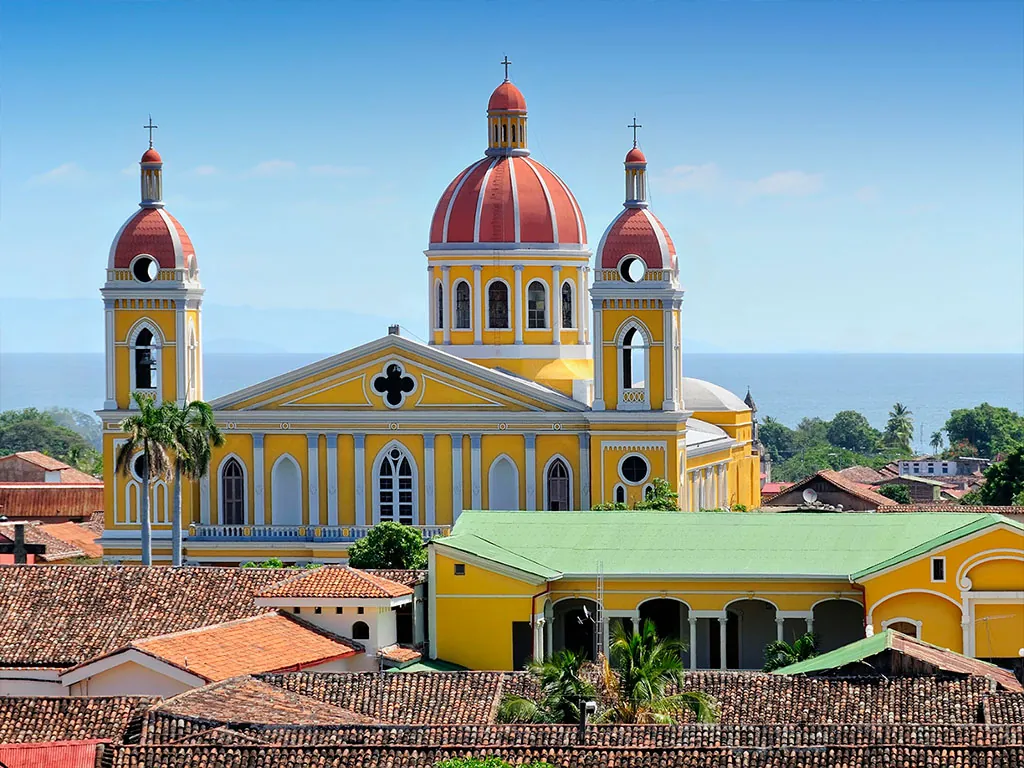
No trip to Nicaragua is complete without visiting Granada, one of Central America’s most historically and architecturally significant cities. With its cobblestone streets and colorful colonial buildings, Granada provides an inviting glimpse into Nicaragua’s past, dating back to its founding in 1524.
The city is a photographer’s dream, featuring grandiose architecture like the San Francisco Convent Museum, which holds a collection of pre-Columbian statues and relics, and the Iglesia de la Merced, where visitors are encouraged to climb its bell tower for sweeping views of the city and surrounding areas. Wander through the central park, a hub of local activity, where you can savor authentic Nicaraguan street food or pick up handcrafted souvenirs at the local markets.
One of the standout activities here is a boat tour around the Granada Islets, a collection of over 300 small islands formed by a volcanic eruption. Revel in the tranquility of kayaking through the calm waters as you spot local bird species, curious monkeys, and nearby private homes owned by wealthy Nicaraguans.
For food lovers, the culinary scene in Granada is just as vibrant. Make sure to try vigorón, a local dish of pork rind served with yucca and pickled cabbage, at one of the city’s open-air restaurants. Granada seamlessly blends cultural, historical, and natural attractions to charm every kind of traveler.
2. Surfing in San Juan del Sur
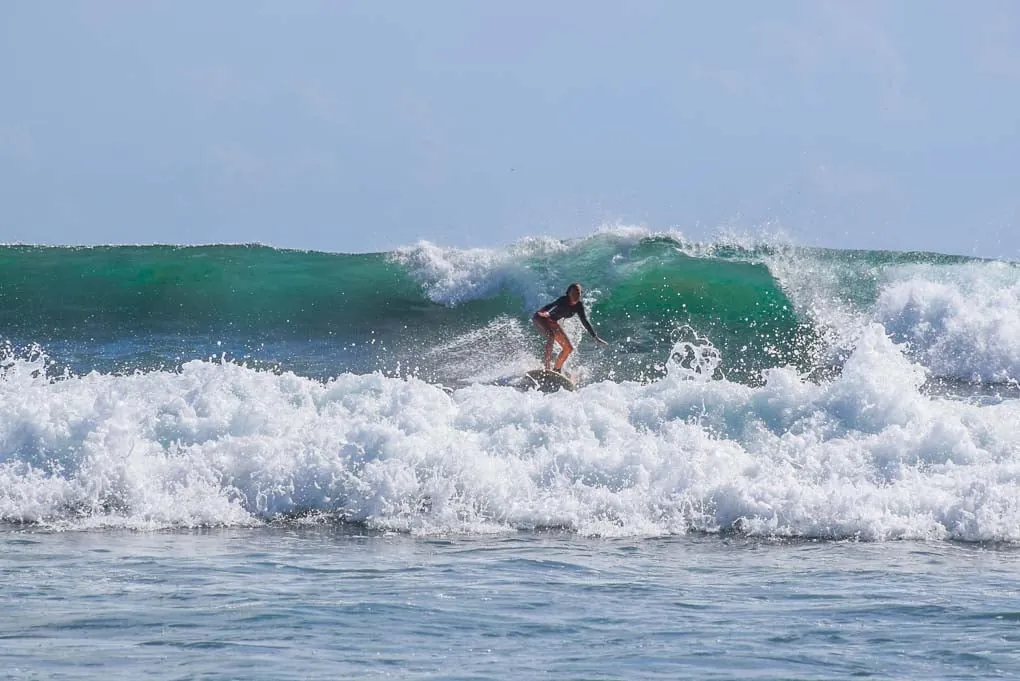
Famous for its breathtaking sunsets and gorgeous beaches, San Juan del Sur is a haven for surfers and beach lovers in Nicaragua. Perched along the Pacific Ocean, the town has earned its reputation as one of the best surfing destinations in Central America.
Beginner and seasoned surfers alike will find waves suited to their skill levels at spots like Playa Maderas and Playa Hermosa, both a short drive from the town center. For an even more serene experience, take a boat trip to discover hidden surf breaks inaccessible by road.
Beyond surfing, San Juan del Sur offers an inviting backdrop for relaxation and rejuvenation. Attend one of the many yoga retreats often hosted at eco-lodges and tranquil resorts, or simply set up a hammock under the shade of a palm tree and soak in the laid-back atmosphere.
The town itself buzzes with activity, particularly in the evenings. With a variety of beachfront bars and restaurants, you can enjoy a cocktail while watching the sun disappear behind the Pacific horizon. For an authentic dining experience, don’t miss out on tasting ceviche made with the day’s fresh catch.
Whether you come for the waves, the vibrant nightlife, or serene beachside living, San Juan del Sur invites you to bask in its tropical allure.
3. Visit Ometepe Island
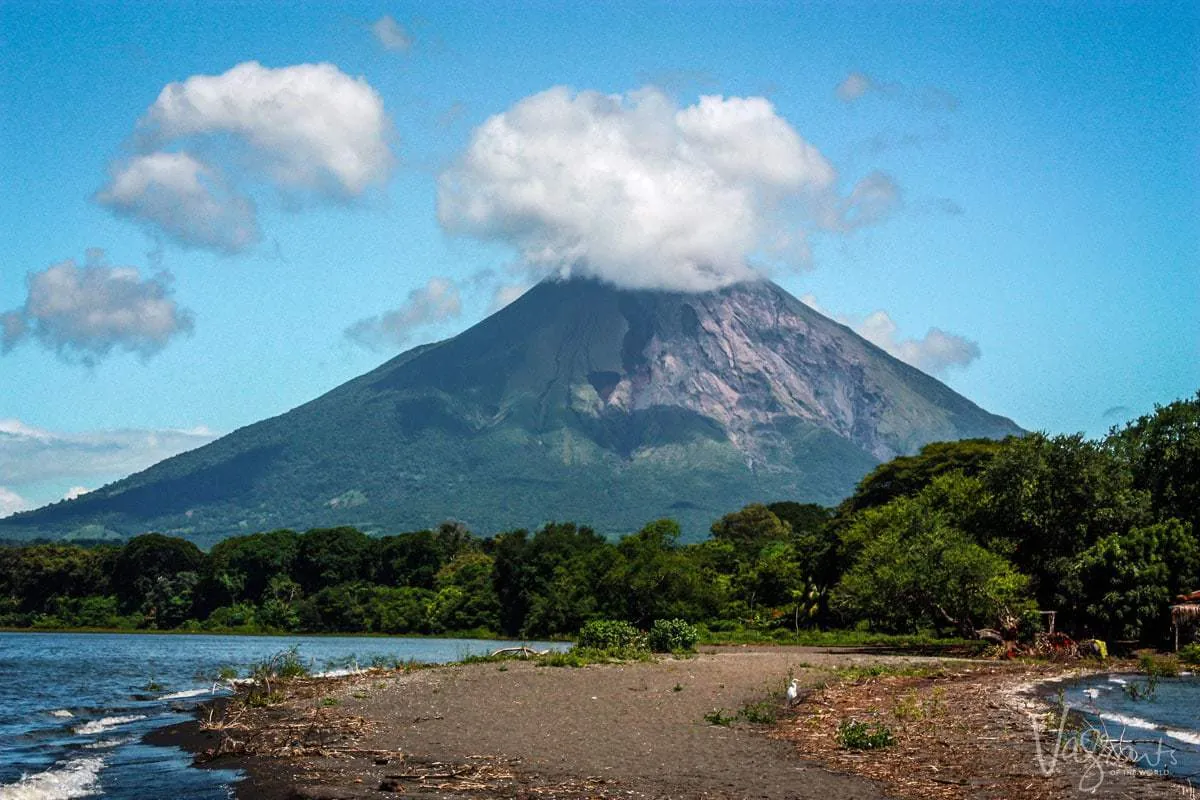
Located within the vast waters of Lake Nicaragua, Ometepe Island stands out with its dramatic landscape of twin volcanoes—Concepción and Maderas—rising like majestic guardians over the surrounding area. Ometepe is a paradise for eco-tourists and outdoor enthusiasts, offering a unique mix of adventure, history, and natural beauty.
If you’re up for a challenge, hiking to the summit of the active volcano Concepción (1,610 meters) presents unparalleled views of the island and beyond. Alternatively, a trek up the dormant Maderas Volcano leads you through lush cloud forests to a breathtaking crater lagoon. Both options make for an unforgettable experience.
Cultural exploration on Ometepe is equally rewarding. Scattered throughout the island, you’ll find ancient petroglyphs, thought to have been carved by pre-Columbian inhabitants. Additionally, many local farms welcome visitors for tours of their coffee plantations or chocolate-making workshops, perfect for getting a taste of the island’s artisanal side.
Water activities are also a major draw. Kayak along the shoreline, explore hidden river channels, or relax at Ojo de Agua, a natural spring-fed pool. The mix of cool water and tropical vegetation makes it an ideal spot to refresh after a day of exploration.
Ometepe combines rugged adventure and cultural immersion unlike anywhere else in Nicaragua. Whether you’re trekking volcanoes, delving into ancient history, or simply savoring the island’s tranquil atmosphere, Ometepe is sure to captivate you.
4. Experience Volcano Boarding on Cerro Negro
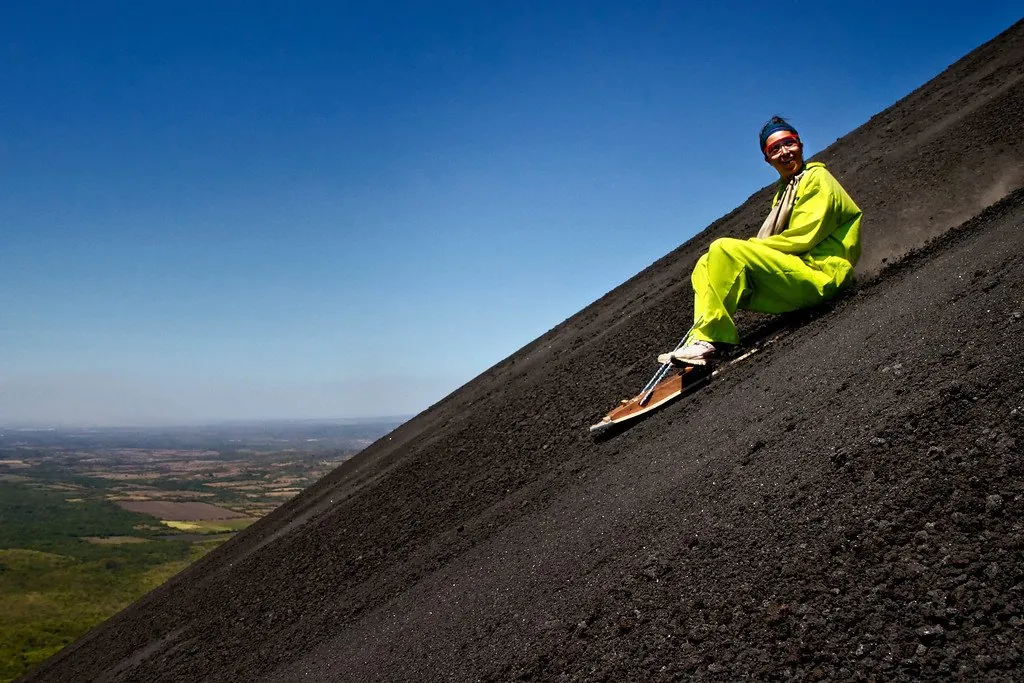
For adrenaline junkies, volcano boarding down the slopes of Cerro Negro, an active volcano near León, is an absolute must. This unique activity has put Nicaragua on the map as one of the world’s hottest adventure destinations.
Cerro Negro, meaning “Black Hill,” is composed of dark volcanic ash that creates the perfect surface for sliding down. The journey begins with a 45-minute hike to the summit, where you’ll enjoy sweeping views of the surrounding landscape, including neighboring volcanoes and verdant fields. Once there, you’ll suit up in a protective jumpsuit, goggles, and gloves—safety is paramount—and receive a crash course on how to control your board.
The descent is the main event. Riders can choose between sitting or standing (similar to sandboarding or snowboarding) as they race down the ash-covered slope at speeds of up to 50 kilometers per hour! It’s a thrilling, one-of-a-kind experience you won’t forget.
Tours to Cerro Negro are offered by various outfitters, who provide all necessary equipment and safety gear, along with guidance from experienced instructors. For beginners, it’s easy to master with a little guidance. Remember, though: the rugged volcanic surface means sturdy shoes and plenty of sunscreen are essential.
Volcano boarding combines stunning natural beauty with unparalleled thrills, making it a bucket-list-worthy activity for any daring traveler visiting Nicaragua.
5. Discover León’s Rich History
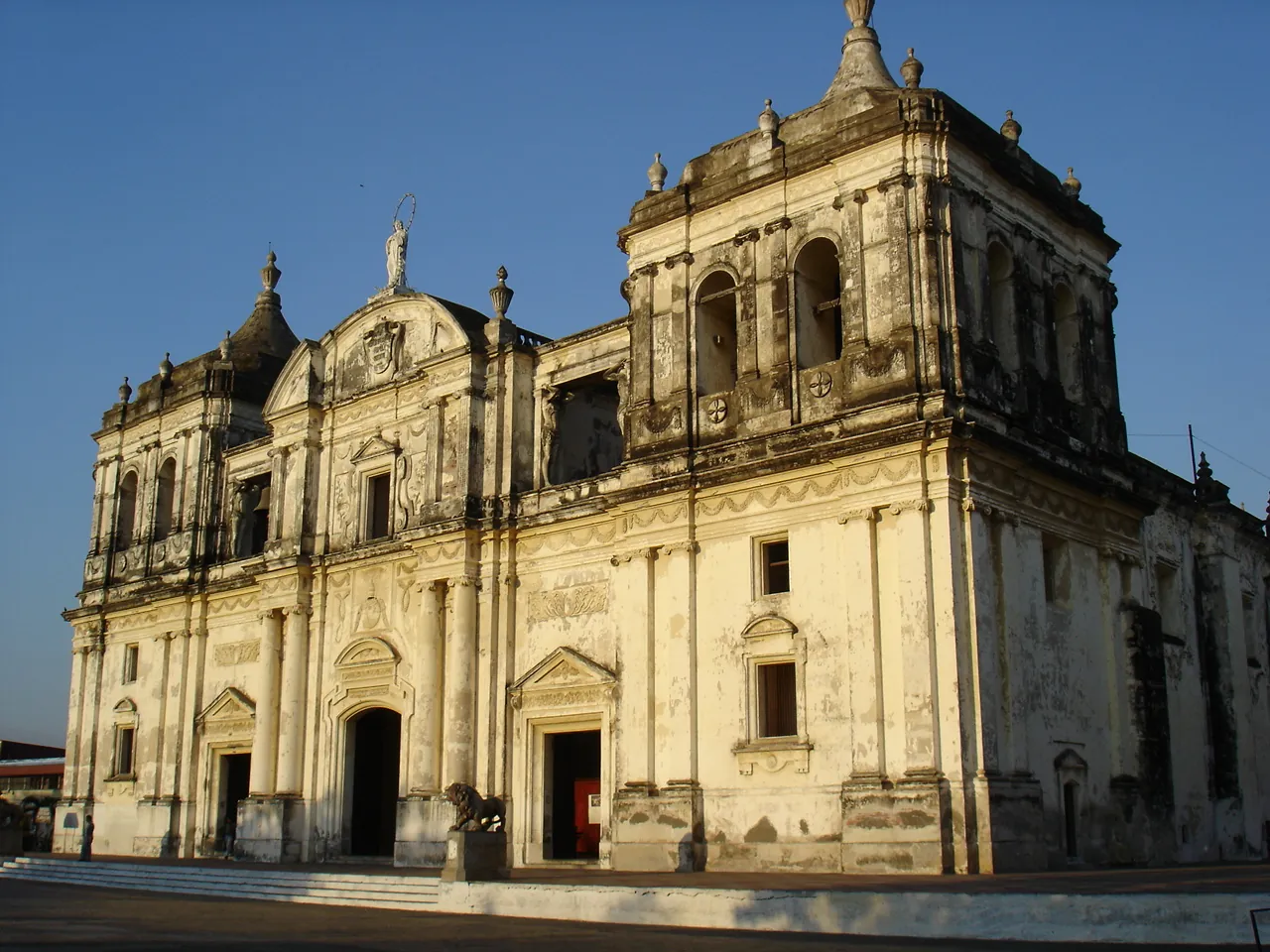
León, Nicaragua’s second-largest city, offers a fascinating blend of rich history, cultural vibrancy, and modern artistic expression. Known as the intellectual and revolutionary heart of the country, León is a city that invites you to delve into its intriguing past and dynamic present.
A major highlight is León Cathedral, a UNESCO World Heritage Site and one of Central America’s largest churches. Ascend to its rooftop for panoramic views of the city and surrounding volcanoes, all while admiring its unique architecture. Nearby, the Museo de la Revolución provides a firsthand look at Nicaragua’s turbulent history, showcasing photographs, artifacts, and the personal stories of former revolutionaries.
Art lovers will appreciate the Centro de Arte Fundación Ortiz Gurdián, an impressive museum housing works from both international and local artists. The juxtaposition of contemporary artists with colonial-era masterpieces gives visitors a deep appreciation of Nicaragua’s artistic heritage.
León also makes an excellent base for outdoor adventures. It’s the gateway to Cerro Negro and other volcanoes in the area, where hiking and volcano boarding take center stage. The city itself brims with vibrant street art, buzzing markets, and delicious local cuisine—be sure to try quesillo, a traditional dish of fresh cheese wrapped in a tortilla with cream and pickled onions.
León’s charm lies in its fusion of history, culture, and adventure. It’s a place where you can admire the past, celebrate the present, and set out for thrilling excursions in the surrounding countryside.
6. Tour Masaya Volcano National Park
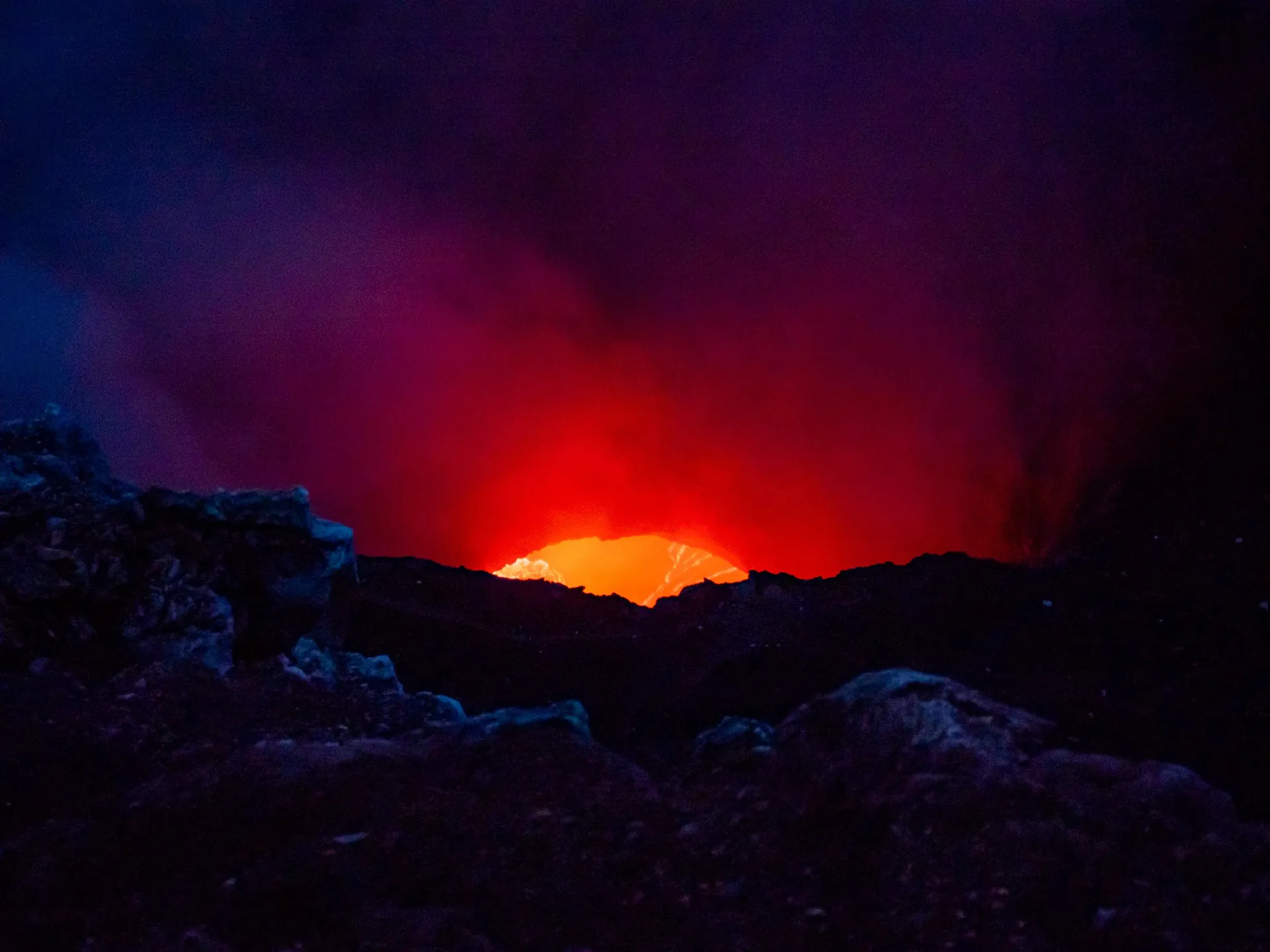
As one of Nicaragua’s most active volcanoes, Masaya Volcano is a geological spectacle that combines awe-inspiring natural beauty with high-energy adventure. Located just 20 kilometers from Managua, Masaya Volcano National Park is easily accessible and remains one of the most popular destinations in the country.
The park offers daytime and nighttime tours, both equally compelling in their own right. During the day, you can hike along trails that provide panoramic vistas of the volcanic craters and surrounding landscapes. A visitor center near the entrance offers fascinating exhibits about the history, ecology, and geology of the park, making it an educational experience as well.
At night, however, the park reveals its true magic. The glowing lava lake at the Santiago Crater becomes visible, casting an eerie red light that creates an otherworldly scene. Witnessing molten lava churning deep within the earth is truly unforgettable.
Beyond the volcano, the park offers other attractions like bat caves—a thrilling experience where you can observe colonies of bats in their natural habitat—and guided tours that dive deeper into the science behind the active volcano.
Before you go, remember to wear sturdy shoes and pack light; the area around the volcano can be windy and hot depending on the time of day. Whether you’re learning about volcanic activity or marveling at glowing lava, Masaya Volcano is an adventure you simply can’t miss while in Nicaragua.
7. Relax at Laguna de Apoyo
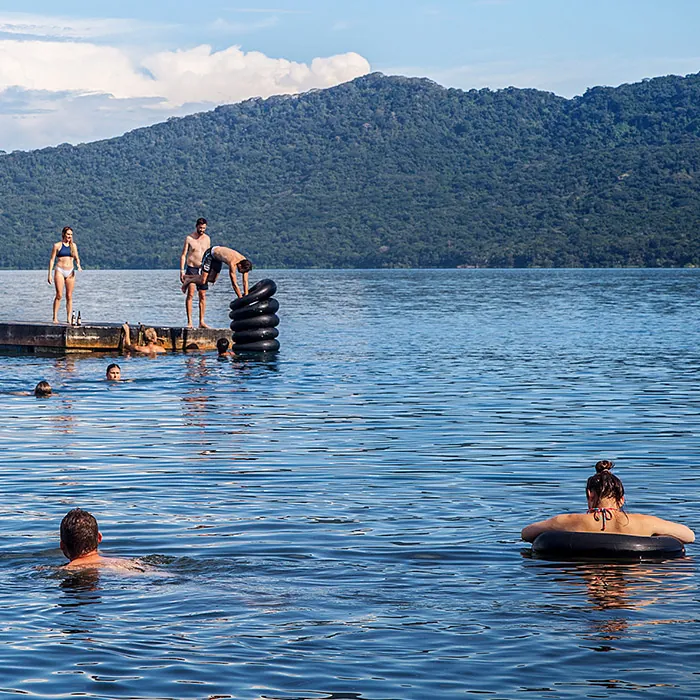
Situated between the cities of Granada and Masaya, Laguna de Apoyo is a serene volcanic crater lake that offers a refreshing escape from the hustle and bustle of Nicaragua’s cities. The lagoon was formed thousands of years ago after the collapse of an ancient volcano, and it now boasts crystal-clear, mineral-rich waters that are perfect for swimming and other recreational activities.
Surrounded by lush forests, Laguna de Apoyo is a haven for nature enthusiasts. Spend the day kayaking, stand-up paddleboarding, or simply floating in the tranquil waters. On the surrounding land, hiking trails wind through the greenery, offering opportunities to spot exotic birds and howler monkeys in their natural habitat.
For those looking to unwind, numerous eco-lodges and visitor-friendly hostels line the edges of the lagoon, offering hammocks, lakeside dining, and wellness activities like yoga. The peaceful atmosphere makes it an ideal destination for couples or solo travelers looking to relax and recharge.
Laguna de Apoyo’s central location also makes it a convenient stopover while exploring the region. Whether you’re passing by on a day trip or planning a longer stay, the lagoon’s idyllic setting and laid-back vibe are sure to leave a lasting impression.
8. Hike in Miraflor Natural Reserve
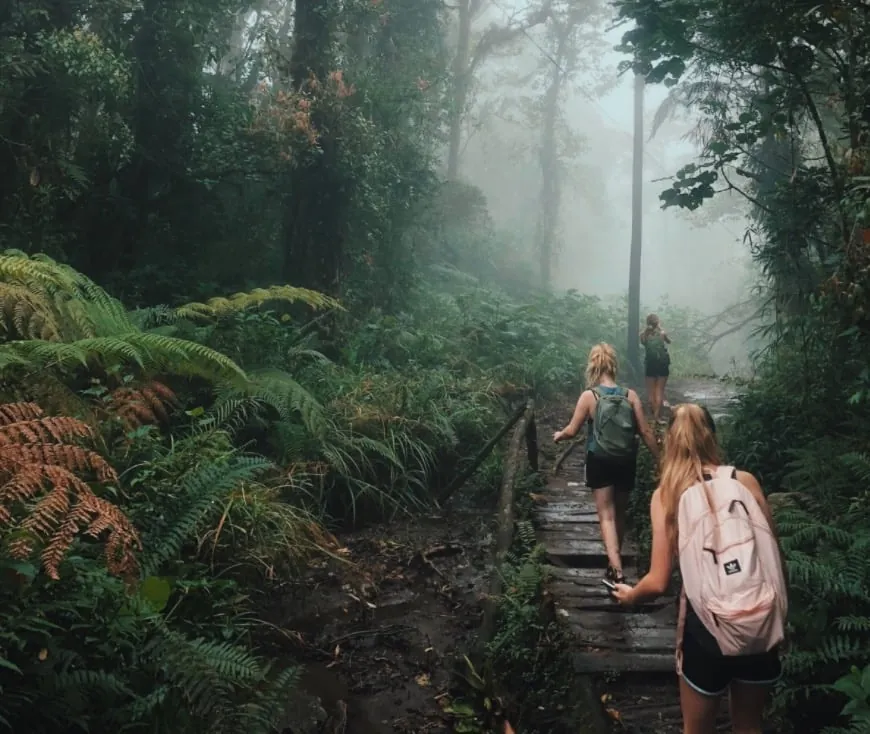
Miraflor Natural Reserve, located in the northern highlands near Estelí, is one of Nicaragua’s hidden gems for eco-tourism. Known for its rolling hills, cloud forests, waterfalls, and organic farming communities, this reserve offers an authentic look into the natural beauty and rural life of Nicaragua.
Hiking in Miraflor is a popular way to take in its lush scenery, which varies from dry tropical forests to verdant cloud forests at higher altitudes. Along the trails, you’ll encounter a rich diversity of plant and animal life, including orchids, hummingbirds, and even elusive quetzals. Guided tours offer insights into local conservation efforts and provide opportunities to learn from knowledgeable area residents.
For an even more immersive experience, consider staying in one of the local homestays offered by the reserve’s cooperatives. By living with a Nicaraguan farming family, you’ll not only enjoy homecooked meals made with organic ingredients but also gain a deeper appreciation for their way of life, from coffee cultivation to cattle herding.
Other activities in the reserve include horseback riding, birdwatching, and visiting hidden waterfalls where you can take a cooling dip. A visit to Miraflor not only guarantees natural beauty but also supports sustainable tourism efforts that directly benefit local communities.
9. Visit the Corn Islands
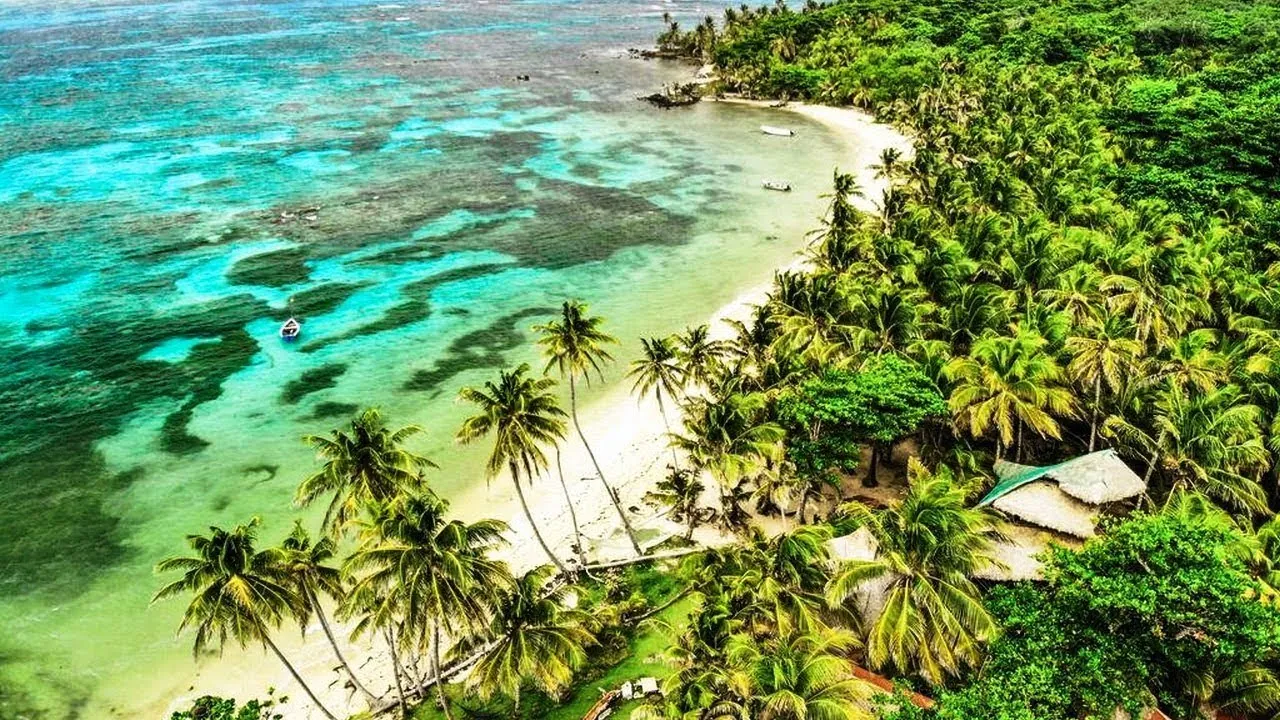
Situated off Nicaragua’s Caribbean coast, the Corn Islands—comprised of Big Corn Island and Little Corn Island—are postcard-perfect destinations that promise white sand beaches, turquoise waters, and a relaxing island vibe.
Big Corn Island is the larger and more developed of the two, offering a variety of accommodations, from budget-friendly guesthouses to luxury beachfront resorts. The island has numerous beaches where you can swim and lounge under swaying palm trees. While snorkeling or diving, you’ll find yourself amidst thriving coral reefs teeming with marine life, including parrotfish, nurse sharks, and sea turtles.
For those seeking even more seclusion, Little Corn Island is a short boat ride away and entirely different in character. With no cars and fewer tourists, the island is a peaceful retreat where time seems to stand still. Stroll along unspoiled beaches, explore jungle trails, or enjoy freshly caught lobster at one of the island’s quaint seaside restaurants.
Both islands offer opportunities for adventure, relaxation, and cultural interaction with the Afro-Caribbean community that calls them home. Whether you’re in the mood to swim, snorkel, or simply take in the stunning views, the Corn Islands are a dream destination for anyone craving a tropical escape.
10. Explore Somoto Canyon
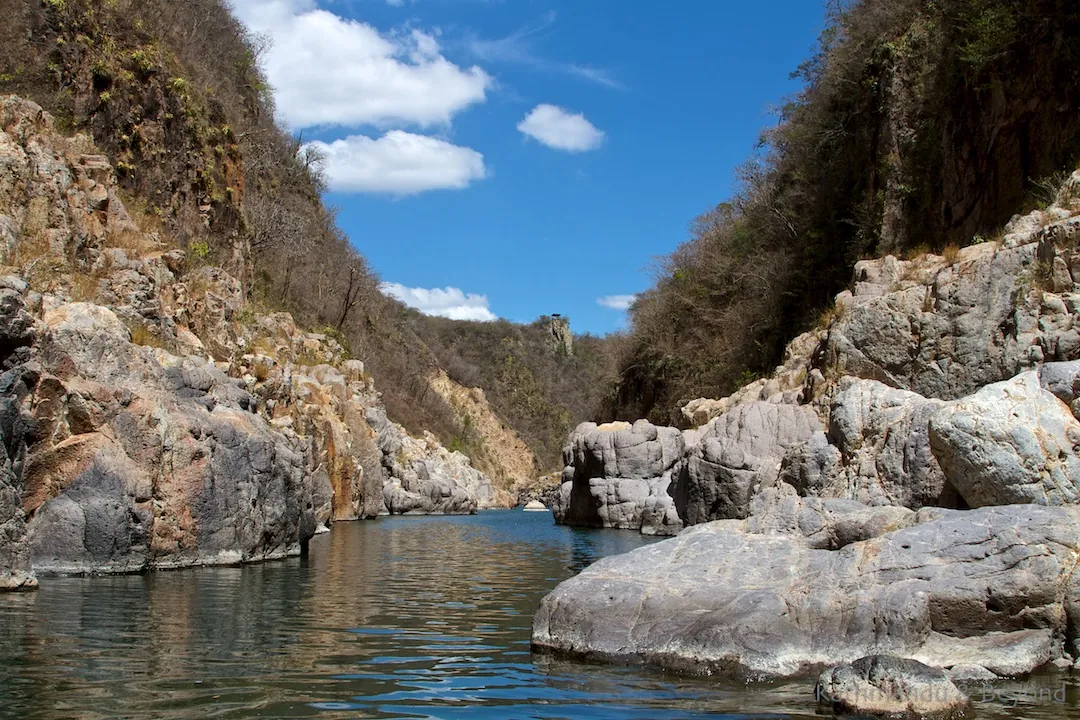
Nestled in northern Nicaragua near the border with Honduras, Somoto Canyon is a natural wonder that has become a popular destination for adventure-seekers. This dramatic canyon, carved by the Coco River over millions of years, is characterized by towering cliffs, turquoise waters, and winding river corridors.
One of the best ways to experience the canyon is through a guided tour, where you can hike, wade, and swim your way through this geological marvel. For the more daring, activities like cliff jumping—from varying heights into the canyon’s calm pools—offer an exhilarating experience. Those looking for a less intense adventure can opt for a boat ride or inner tubing along the river.
The landscape is equally breathtaking for photographers and nature enthusiasts. The combination of towering rock walls, vibrant greenery, and pristine waters makes Somoto Canyon visually stunning and an excellent place to connect with nature.
For comfort, local tour operators provide safety gear, including life vests and helmets, ensuring all skill levels can enjoy the excursion. The town of Somoto also offers a few basic accommodations, making it easy to spend a night nearby and explore the surrounding countryside.
If you’re looking to combine adventure with awe-inspiring natural beauty, Somoto Canyon is a must-visit destination in Nicaragua.
11. Enjoy Nature at Bosawás Biosphere Reserve
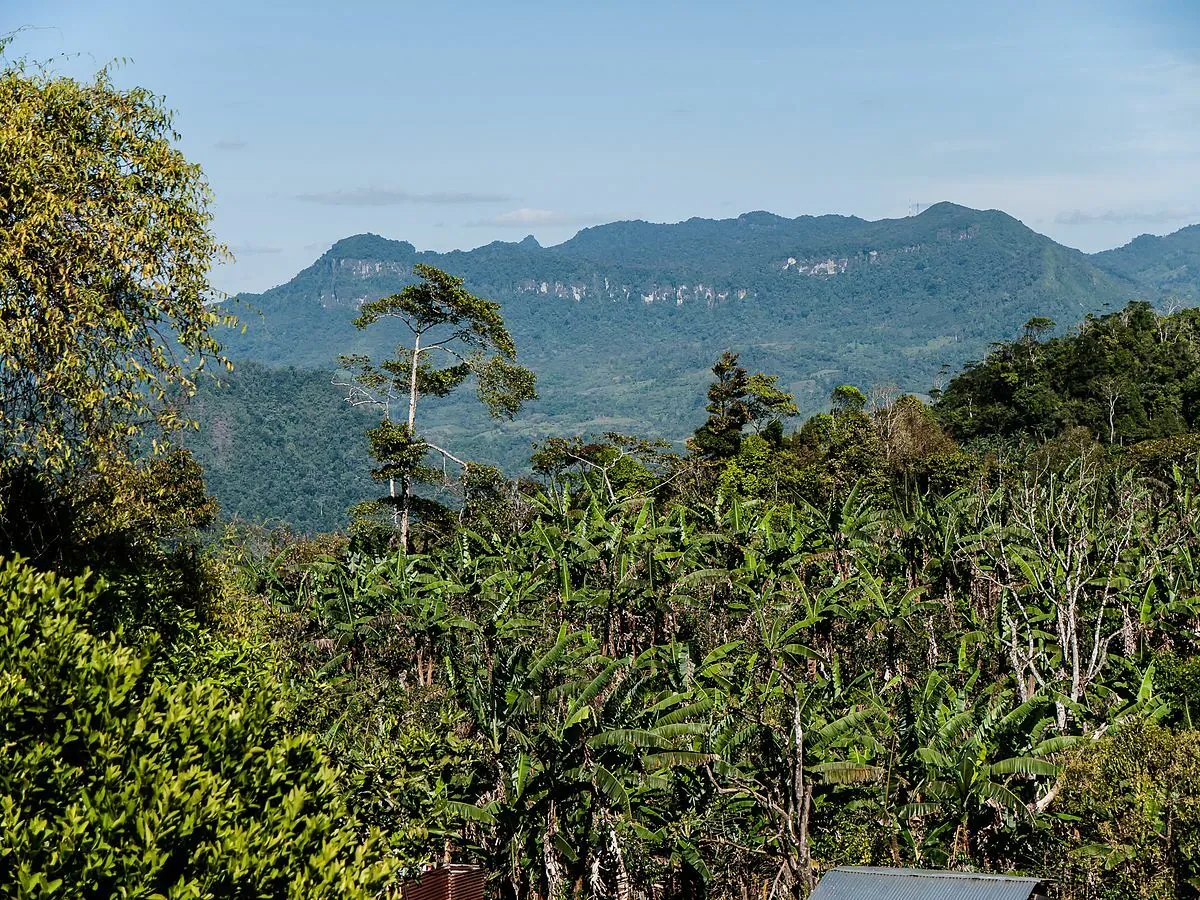
Designated as a UNESCO World Heritage site, the Bosawás Biosphere Reserve is one of the largest rainforests in the Western Hemisphere and a haven for eco-tourists seeking to explore Nicaragua’s wild side. Covering nearly 15% of the country’s entire landmass, the reserve is home to a vast array of biodiversity, from jaguars and ocelots to rare birds like the harpy eagle.
This dense jungle, often referred to as the “lungs of Central America,” offers guided tours that allow visitors to witness its untouched beauty. Expert guides from local Indigenous communities can take you deep into the rainforest, pointing out unique plant species and explaining traditional uses for medicinal herbs. The sounds of rushing rivers, chirping birds, and distant howler monkeys make for an immersive nature experience like no other.
The region’s remoteness ensures that only the most dedicated adventurers make their way here, making it an ideal spot for anyone seeking to escape the usual tourist hotspots. Multi-day treks and boat tours are available, providing a chance to truly connect with both nature and the Indigenous peoples who call this rainforest home.
Due to its isolation, traveling to Bosawás requires preparation and coordination with local eco-tourism providers. However, for lovers of the outdoors and biodiversity, the Bosawás Biosphere Reserve offers a once-in-a-lifetime glimpse into one of the most pristine ecosystems in Central America.
12. Visit Masaya’s Crafts Market
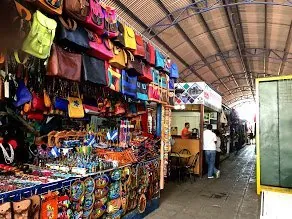
Ideal for souvenir shopping and cultural exploration, the Masaya Crafts Market is a must-visit destination for those seeking authentic Nicaraguan artistry. Located in the town of Masaya, often called the “City of Flowers,” this bustling market is an excellent place to discover the country’s rich cultural heritage through its vibrant handicrafts.
At the market, you’ll find a variety of traditional items such as colorful hammocks, handwoven textiles, ceramics, leather goods, and intricate wood carvings. Masaya is particularly famous for its finely crafted machetes, often decorated with ornate designs. You’ll also encounter local painters selling their artworks, many of which reflect Nicaragua’s natural landscapes, folklore, or historical themes.
Don’t miss the chance to interact with the artisans themselves; they’re often happy to share the stories and techniques behind their creations. Many of the skills passed down through generations are rooted in Nicaragua’s Indigenous and colonial history, adding a rich cultural layer to every item sold.
The market also offers a selection of local snacks and drinks, where you can sample treats like rosquillas (corn cookies) or sip on cacao. Whether you’re hunting for mementos or simply soaking up the lively atmosphere, Masaya’s Crafts Market offers a vivid slice of local life and creativity.
13. Experience Managua’s Tiscapa Lagoon Natural Reserve
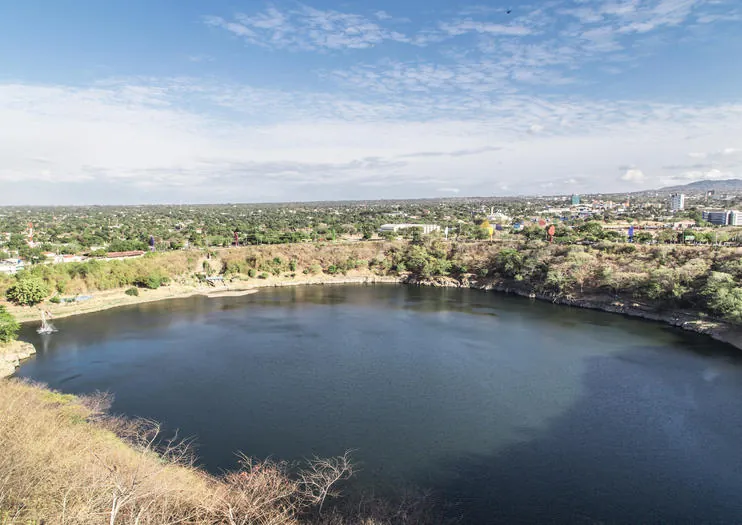
For a unique blend of nature and history within Nicaragua’s bustling capital of Managua, the Tiscapa Lagoon Natural Reserve offers a tranquil escape. This volcanic lagoon—formed within the crater of an extinct volcano—sits atop a hill, providing visitors with fantastic views of the cityscape and its nearby lake.
Beyond the natural beauty, the Tiscapa Lagoon also has significant historical importance. Overlooking the lagoon stands a towering silhouette of Augusto César Sandino, a celebrated revolutionary leader. This iconic monument serves as a reminder of Nicaragua’s political struggles and achievements.
Visitors can stroll along the walking paths surrounding the lagoon or relax and enjoy the serene environment. It’s an excellent spot to pause and reflect while taking in the panoramic views of Managua’s active life below. There’s also ziplining for thrill-seekers, offering a bird’s-eye view of the lagoon and surrounding areas.
Though swimming in the lagoon is prohibited due to its ecological importance, the reserve remains a popular spot to connect with Managua’s layered history and natural environment. A visit to the Tiscapa Lagoon beautifully combines elements of relaxation, education, and a bit of adventure.
14. Explore El Tisey Natural Reserve
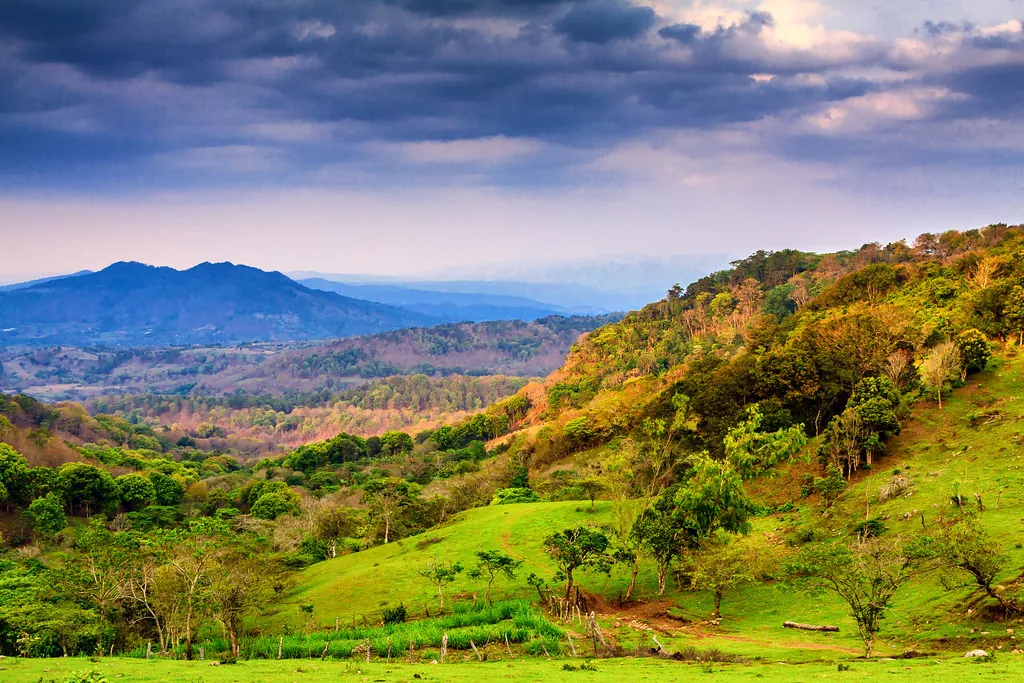
Located in the highlands near Estelí, the El Tisey Natural Reserve is a must-visit destination for nature lovers and those interested in local art and culture. The reserve is famous for its dramatic cliffs, dense forests, and scenic views of the surrounding mountains and valleys.
One of the most unique attractions here is the cliff carvings by Alberto Gutiérrez Jirón, often known as “The Stone Man.” Living in the reserve nearly his entire life, Alberto has carved elaborate images of animals, religious figures, and mythical scenes into the rocks, using a variety of simple hand tools. Visitors can meet him in person and listen to his incredible stories, blending art and spirituality.
Beyond its artistic appeal, El Tisey offers a range of outdoor activities, including hiking through cloud forests, wildlife spotting, and visits to eco-friendly farms. Local farmers produce organic cheese, coffee, and honey, which you can sample during your visit.
Whether you come for the natural landscapes, cultural experiences, or to witness the incredible craftsmanship of Alberto Gutiérrez, El Tisey provides a peaceful retreat that highlights Nicaragua’s ecological diversity and artistic heritage.
15. Take a Boat Trip on Lake Nicaragua
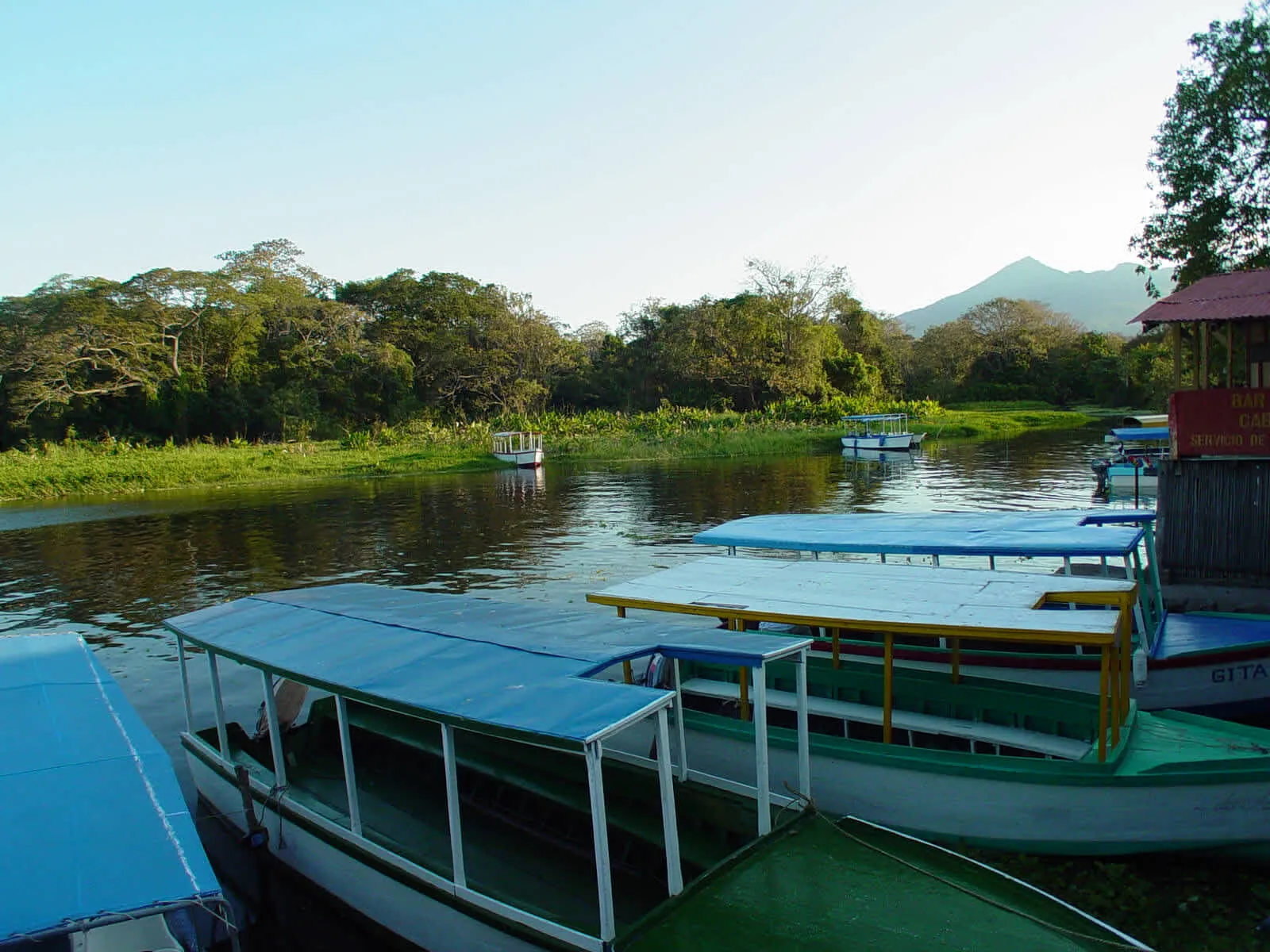
Covering an area of over 8,200 square kilometers, Lake Nicaragua is the largest freshwater lake in Central America and a vital part of the country’s identity. One of the most rewarding experiences for travelers is taking a boat trip across this majestic body of water.
The most iconic destination within the lake is Ometepe Island, but the lake boasts plenty of other treasures worth exploring. A boat trip around the Granada Islets, for example, offers a peaceful way to navigate through a series of 365 small islands created by ancient volcanic eruptions. Many of these private islets are inhabited, with small homes or rental retreats, while others have been left untouched as havens for wildlife.
For history enthusiasts, a trip through the lake’s Río San Juan region offers an adventurous journey into the past. The river, which flows out of the lake toward the Caribbean Sea, has long been a strategic waterway, and areas along its route feature historic forts, pirate lore, and ecological reserves.
Whether you’re cruising through tranquil islets or exploring the history-rich waters, Lake Nicaragua offers an unforgettable blend of natural beauty and cultural significance.
16. Admire the Cliff Carvings at El Tisey
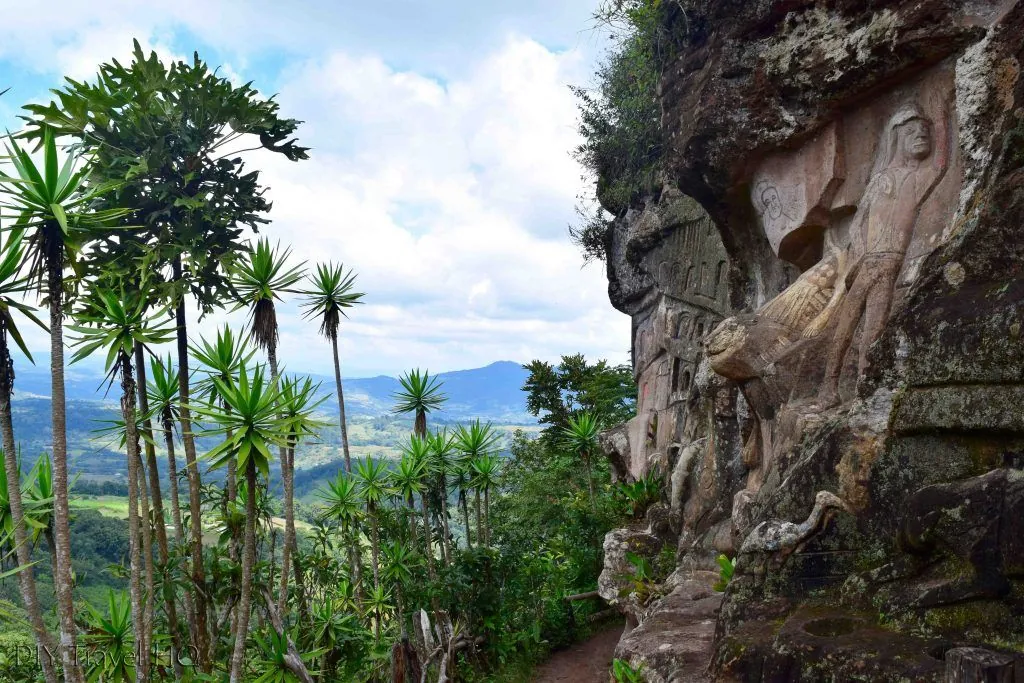
Returning to El Tisey Natural Reserve, the cliff carvings of Alberto Gutiérrez Jirón deserve their own deeper exploration. This self-taught artist has spent over five decades carving unique etchings into the stones surrounding his home. Known for his welcoming demeanor and passion for his work, Alberto Gutiérrez has turned the area into a living outdoor gallery.
At El Tisey, visitors can hike a scenic trail that skirts the edge of the reserve to meet Alberto and view his masterpieces. His carvings feature animals, biblical references, and elements of Nicaraguan folk tales. Each piece tells a story, reflecting his views on religion, nature, and the iconic cultural heritage of the country.
For many travelers, meeting Alberto is a memorable cultural encounter. His warmth and humility add a personal touch to the visit, offering visitors not just a look into his artwork but also a connection to the land and its stories.
The surrounding greenery, rolling hills, and peaceful ambiance make the region itself worthy of exploration. For a mix of human creativity and natural beauty, experiencing the cliff carvings at El Tisey should definitely make its way onto your Nicaragua itinerary.
17. Visit the Stone Man in Estelí

In the highlands near Estelí, one of Nicaragua’s most extraordinary individuals, Alberto Gutiérrez Jirón, better known as the “Stone Man,” welcomes curious visitors to his unique life’s work. For over five decades, Alberto has been carving whimsical and spiritual images into the cliffs of El Tisey Natural Reserve, telling stories of nature, Nicaraguan folklore, and his personal faith. His carvings depict animals, biblical scenes, and cultural icons meticulously etched into the rock, blending art with storytelling.
Meeting the “Stone Man” is an experience in itself. A deeply spiritual and humble figure, Alberto shares the inspiration behind his carvings and his love for the surrounding wilderness. Visitors are encouraged to explore the carvings and enjoy the breathtaking views of Estelí’s sweeping landscapes.
Reaching his property requires a short hike, and the experience is best paired with the other serene attractions of El Tisey, making for a magical day of culture and nature in the Estelí region.
18. Wander Through León Viejo
A glimpse into Nicaragua’s colonial beginnings awaits at León Viejo, a UNESCO World Heritage Site and the ruins of one of the oldest Spanish colonial settlements in the Americas, founded in 1524. This archeological site, located near the small town of La Paz Centro, captures the country’s early history and offers a portal back to the 16th century.
Buried under volcanic ash after eruptions from Momotombo Volcano, León Viejo was preserved remarkably well. It was only rediscovered centuries later, revealing foundations of churches, homes, and infrastructure that paint a picture of early colonial life. Guided tours provide fascinating insights into daily life during the settlement’s heyday, as well as explanations of its abandonment due to the constant threat of volcanic activity.
Perched on a hill, the site also offers stunning views of Momotombo and Lake Managua, making León Viejo a destination that merges history and scenic beauty.
19. Discover the Solentiname Archipelago
The Solentiname Archipelago, a cluster of 36 small islands in Lake Nicaragua, is a peaceful haven bursting with beauty and creativity. Accessible by boat from the town of San Carlos, this remote archipelago is famous for its artistic community, stunning nature, and slow-paced atmosphere.
Home to painters, sculptors, and poets, particularly those inspired by the archipelago’s former resident and famed poet-priest Ernesto Cardenal, the islands are rich in artistic and cultural experiences. Visitors can purchase vibrant primitivist artwork, paintings that depict colorful scenes of daily life and nature.
In addition to its cultural appeal, the islands are a sanctuary for birdwatchers and kayakers, with opportunities to spot exotic species, lush vegetation, and serene waterways. For a unique and tranquil escape, the Solentiname Archipelago offers an ideal mix of art, spirituality, and natural beauty.
20. Explore Río San Juan Region
The Río San Juan region offers an enchanting journey through lush jungles, quiet villages, and historical landmarks. This area, home to the meandering San Juan River, provides an excellent escape for those looking to explore Nicaragua’s waterways and cultural history.
One of the highlights is the Indio Maíz Biological Reserve, a biodiverse rainforest teeming with wildlife such as howler monkeys, toucans, and tropical frogs. Kayaking or boat tours along the river allow for up-close wildlife spotting and peaceful connections with nature.
History lovers will appreciate a visit to El Castillo, a 17th-century Spanish fortress perched on the riverbank. This structure was built to defend the area against pirates and British invaders and offers spectacular views of the jungle-lined river.
With its mix of ecological wonders and historic landmarks, the Río San Juan region is an exciting getaway that showcases Nicaragua’s hidden treasures.
21. Visit Chinandega’s Volcanoes
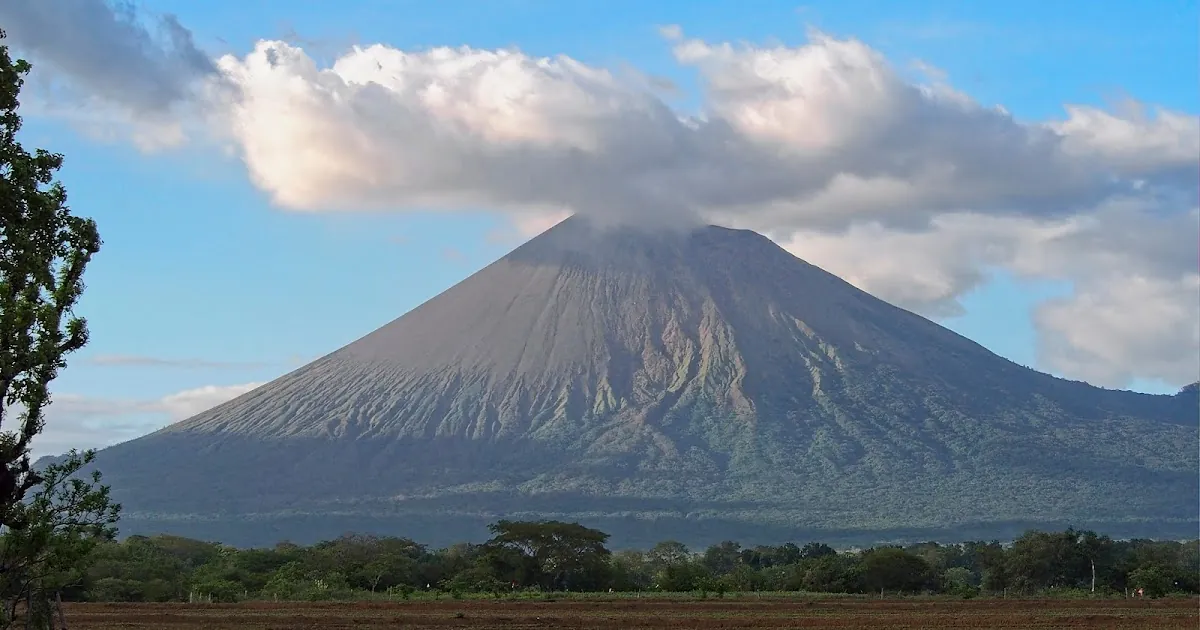
Hidden in Nicaragua’s northwest, Chinandega is a land of stunning volcanic landscapes. Among its most striking features is San Cristóbal Volcano, the tallest volcano in the country, standing at 1,745 meters. Popular for hiking, this volcano offers an adventurous trek with sweeping views over the surrounding countryside.
Other notable volcanoes in the area include Casita and Telica, both of which provide hiking opportunities catering to different skill levels. Telica, in particular, offers the chance to peer into a glowing crater of molten lava, making it a must-visit for thrill-seekers.
The Hervideros de San Jacinto, a collection of bubbling mud pits and geothermal hot springs, is another fascinating natural attraction in the Chinandega region. Whether you’re trekking steep volcanic slopes or relaxing in these sulfuric pits, Chinandega’s volcanic attractions make it an incredible destination for nature enthusiasts.
22. Experience Local Cuisine in Nicaragua
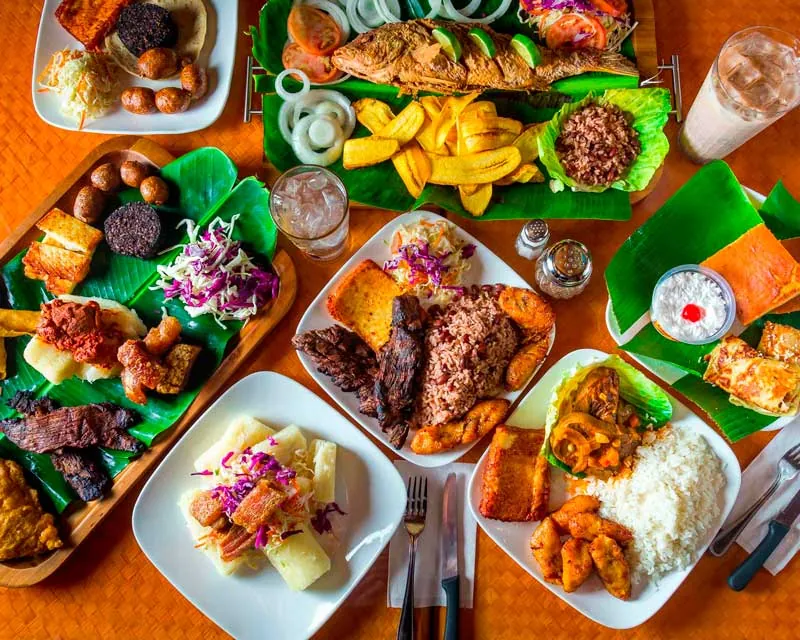
Nicaraguan cuisine is a flavorful reflection of the country’s rich history and diverse cultures. Sampling the country’s fare is one of the most fulfilling ways to immerse yourself in its culture.
One of the staples you’re bound to encounter is gallo pinto, a simple yet delicious mix of rice and beans often paired with eggs, plantains, and tortillas for breakfast. Another local favorite is vigorón, which consists of yucca, pork rinds, and pickled cabbage salad, served on a banana leaf for added authenticity.
Street food enthusiasts should seek out quesillo, a fresh cheese served in a tortilla and drizzled with sour cream and pickled onions. Meanwhile, seafood lovers will revel in dishes like freshly grilled fish or shrimp along the Atlantic Coast.
For dessert, tres leches cake or picos (sweet bread) are must-tries. Wash it all down with a cacao fresco, Nicaragua’s refreshing, chocolate-based drink.
With each region of Nicaragua bringing its own spin to traditional dishes, meals are a delightful journey into local life. Whether dining at a family-run café or sampling street food during a festival, the culinary offerings of Nicaragua will leave your taste buds thoroughly satisfied.
23. Participate in a Homestay or Language Program
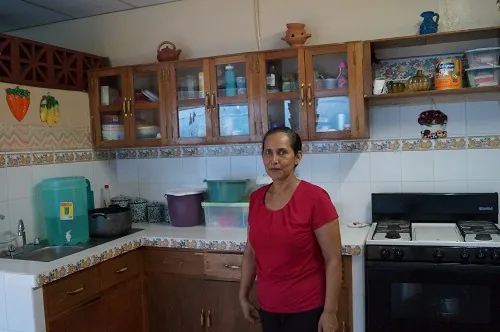
For a deeper connection to Nicaragua’s culture, consider participating in a homestay or enrolling in a Spanish language program. Many towns, particularly in regions like León and Granada, offer immersion programs where international visitors live with local families, gaining firsthand insight into daily life, traditions, and cuisine.
Homestays generally include shared meals and plenty of opportunities for cultural exchange. You may find yourself helping prepare traditional dishes, learning local customs, or even attending a family celebration. Programs often include optional activities like guided tours of nearby attractions.
Language schools are abundant in Nicaragua, catering to all levels of Spanish proficiency. Combine language lessons with cultural workshops or volunteer work to make the experience richer. Whether you’re learning Spanish or simply forging new friendships, a homestay or language program provides an enriching way to connect with Nicaragua on a personal level.
24. Attend Local Festivals and Events
Nicaragua is known for its lively and colorful festivals that showcase deep-rooted traditions and the joy of communal celebration. One of the most famous is La Purísima in early December. Dedicated to the Virgin Mary, this Catholic celebration involves singing, altar displays, and neighborhood parades.
Another must-see event is Granada’s International Poetry Festival, which draws literary enthusiasts from across the globe. This vibrant gathering celebrates poetry through readings, live music, and cultural performances in a stunning colonial setting.
In León, you can catch the Gritería Chiquita, a smaller version of La Purísima celebrated in August. Meanwhile, rural festivals such as Fiesta de San Juan Bautista combine folk dances and traditional music with festivities that run late into the night.
By attending a local festival, you’ll witness the soul and unity that define Nicaraguan culture. Bring your camera, an open heart, and your dancing shoes!
25. Enjoy Coffee Tours in Northern Nicaragua
Nicaragua’s northern highlands, particularly Matagalpa and Jinotega, are famous for their coffee production. A visit to one of the many coffee plantations offers a fascinating window into the artistry of cultivating one of the world’s most beloved beverages.
On a coffee tour, you’ll learn about every stage of production, from planting and harvesting to roasting. Skilled farmers offer demonstrations of traditional and modern techniques, sharing stories behind the craft.
The tours often conclude with a tasting session, allowing you to sample rich, freshly brewed coffee while gazing at the misty hills where the beans grow. It’s an ideal experience for coffee aficionados or anyone looking to support sustainable farming practices.
Visiting during harvest season (November through February) is particularly rewarding, as you’ll witness the bustling activity of the workers and the surrounding community. With breathtaking scenery and expertly brewed coffee, Nicaragua’s coffee tours are a sensory delight.
FAQs Section
1. What is the best time to visit Nicaragua?
The best time to visit Nicaragua is during the dry season, which runs from November to April. During this time, you’ll enjoy sunny weather perfect for exploring beaches, volcanoes, and cities. The wet season (May to October) has more rain but also lush greenery and fewer tourists.
2. Are there safety concerns for tourists in Nicaragua?
Nicaragua is generally safe for tourists. Like any destination, exercise caution in urban areas and avoid showing valuables. Stick to reputable tour providers and use official taxis or ride-sharing apps for transportation. Checking up-to-date travel advisories is also recommended.
3. How can I travel around Nicaragua?
You can easily travel between cities using buses, which are affordable and frequent. For more comfort, private shuttles and taxis are available. Car rentals are also common for exploring remote areas, though some roads may require caution.
4. What are some must-see natural attractions?
Top natural attractions include Ometepe Island, Masaya Volcano National Park, Somoto Canyon, and Bosawás Biosphere Reserve. Nicaragua’s volcanic landscapes, rainforests, and pristine beaches offer something for every nature lover.
5. Can I visit Nicaragua on a budget?
Yes, Nicaragua is one of the most budget-friendly destinations in Central America. Accommodations, food, and transportation are very affordable. From hostels to street eats, you’ll find plenty of options to explore the country without breaking the bank.
Conclusion
Nicaragua is a country filled with stunning landscapes, rich history, and vibrant culture. Whether you’re hiking active volcanoes, relaxing on pristine beaches, or immersing yourself in the colorful traditions of its people, Nicaragua offers something truly special for every type of traveler.
This guide to 25 unmissable experiences spans the bustling colonial streets of Granada, the tranquil shores of Laguna de Apoyo, and the remote beauty of Corn Islands, showcasing the incredible variety that this Central American country offers. Beyond the attractions, it’s the warmth and resilience of the Nicaraguan people that will stay with you long after your visit.
So, pack your bags, brush up on your Spanish, and embark on an unforgettable journey filled with authentic adventures and memories waiting to be made. Nicaragua is calling, and it’s time to answer!
